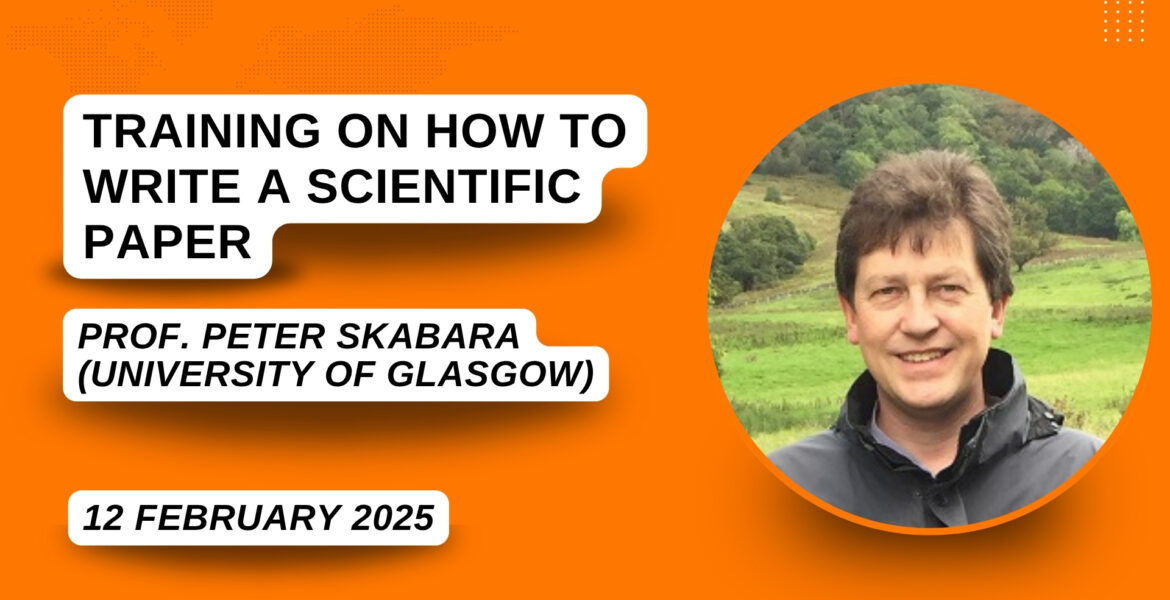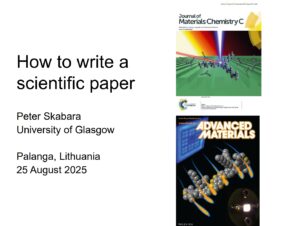- Home
- Training on How to Write a Scientific Paper

Trainer: Prof. Peter Skabara (University of Glasgow)
The training was delivered by Professor Peter Skabara, Ramsay Chair of Chemistry at the University of Glasgow. He has authored over 230 peer-reviewed publications in the field of organic electronic and photonic materials. His H-index (Google Scholar) is 54, and he has received both the Royal Society Wolfson Award and the Peter Day Award from the Royal Society of Chemistry.
The Skabara research group became well known for its development of novel organic semiconductors. Their materials have ranged from small to large molecules (up to 8,000 Da), as well as well-defined and monodisperse oligomers and polymers prepared by chemical or electrochemical methods.
Highlights of their achievements included organic lasers with record-breaking low thresholds, organic solar cells with highly promising efficiencies for molecular species, field-effect transistors with excellent air stability, materials for single-molecule devices with record current modulation, and novel compounds for light-emitting diodes.
Training on How to Write a Scientific Paper
The training for scientific dissemination and communication was delivered in modules.
This session focused on advanced research in organic electronic and photonic materials. The lecture was conducted by Professor Peter Skabara, Ramsay Chair of Chemistry at the University of Glasgow, and presented key breakthroughs from his research group.

Module: Organic Electronic & Photonic Materials
Trainer: Prof. Peter Skabara (University of Glasgow)
Professor Skabara is the author of over 230 peer-reviewed publications and has received major awards, including the Royal Society Wolfson Award and the Peter Day Award from the Royal Society of Chemistry.
His research has made a lasting impact on the development of organic semiconductors and their application in cutting-edge devices.
Part 1: Research Excellence & Recognition
Overview of Prof. Skabara’s contributions to organic electronic and photonic materials.
H-index of 54 (Google Scholar), reflecting significant influence and recognition in the field.
Honors include the Royal Society Wolfson Award and the Royal Society of Chemistry’s Peter Day Award.
Part 2: Development of Organic Semiconductors
The Skabara research group has advanced the synthesis of organic semiconductors, from small molecules to large species (up to 8,000 Da).
Their work includes well-defined oligomers and polymers, prepared by both chemical and electrochemical means.
Part 3: Breakthrough Device Applications
Organic lasers with record-breaking low thresholds.
Organic solar cells with highly promising efficiencies for molecular species.
Field-effect transistors with excellent air stability.
Materials for single-molecule devices with record current modulation.
Novel compounds for light-emitting diodes with advanced performance characteristics.
Lecture Presentation Slides
DOWNLOAD THE SLIDES


